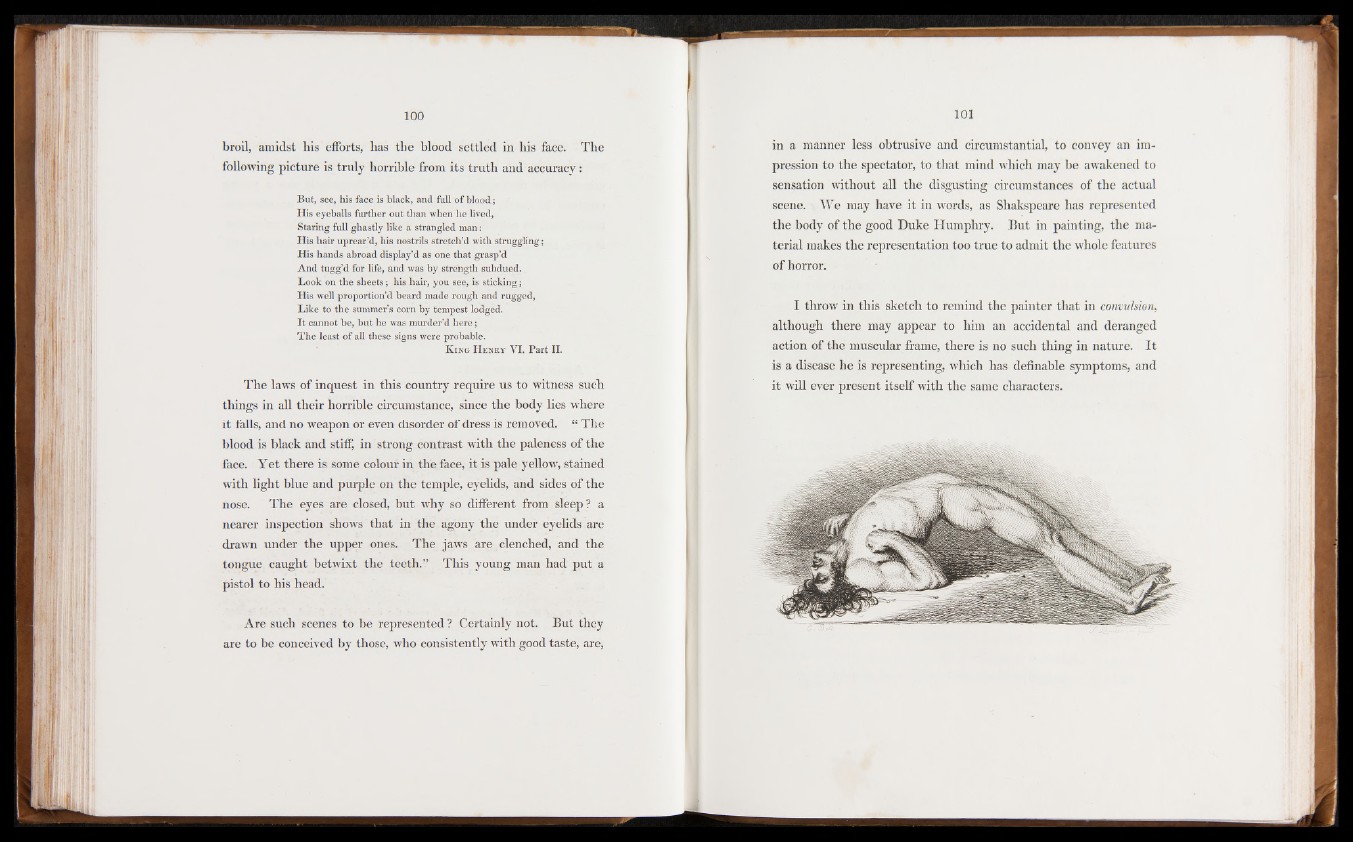
broil, amidst his efforts, has the blood settled in his face. The
following picture is truly horrible from its truth and accuracy:
But, see, his face is black, and full of blood;
His eyeballs further out than when he lived,
Staring full ghastly like a strangled man:
His hair uprear’d, his nostrils stretch’d with struggling;
His hands abroad display’d as one that grasp’d
And tugg’d for life, and was by strength subdued.
Look on the sheets; his hair, you see, is sticking;
His well proportion’d beard made rough and rugged,
Like to the summer’s corn by tempest lodged.
It cannot be, but he was murder’d here;
The least of all these signs were probable.
K in g H e n r y VI. Part II.
The laws of inquest in this country require us to witness such
things in all their horrible circumstance, since the body lies where
it falls, and no weapon or even disorder of dress is removed. “ The
blood is black and stiff, in strong contrast with the paleness of the
face. Yet there is some colour in the face, it is pale yellow, stained
with light blue and purple on the temple, eyelids, and sides of the
nose. The eyes are closed, but why so different from sleep ? a
nearer inspection shows that in the agony the under eyelids are
drawn under the upper ones. The jaws are clenched, and the
tongue caught betwixt the teeth.” This young man had put a
pistol to his head.
Are such scenes to be represented ? Certainly not. But they
are to be conceived by those, who consistently with good taste, are,
in a manner less obtrusive and circumstantial, to convey an impression
to the spectator, to that mind which may be awakened to
sensation without all the disgusting circumstances of the actual
scene. We may have it in words, as Shakspeare has represented
the body of the good Duke Humphry. But in painting, the material
makes the representation too true to admit the whole features
of horror.
I throw in this sketch to remind the painter that in convulsion,
although there may appear to him an accidental and deranged
action of the muscular frame, there is no such thing in nature. It
is a disease he is representing, which has definable symptoms, and
it will ever present itself with the same characters.